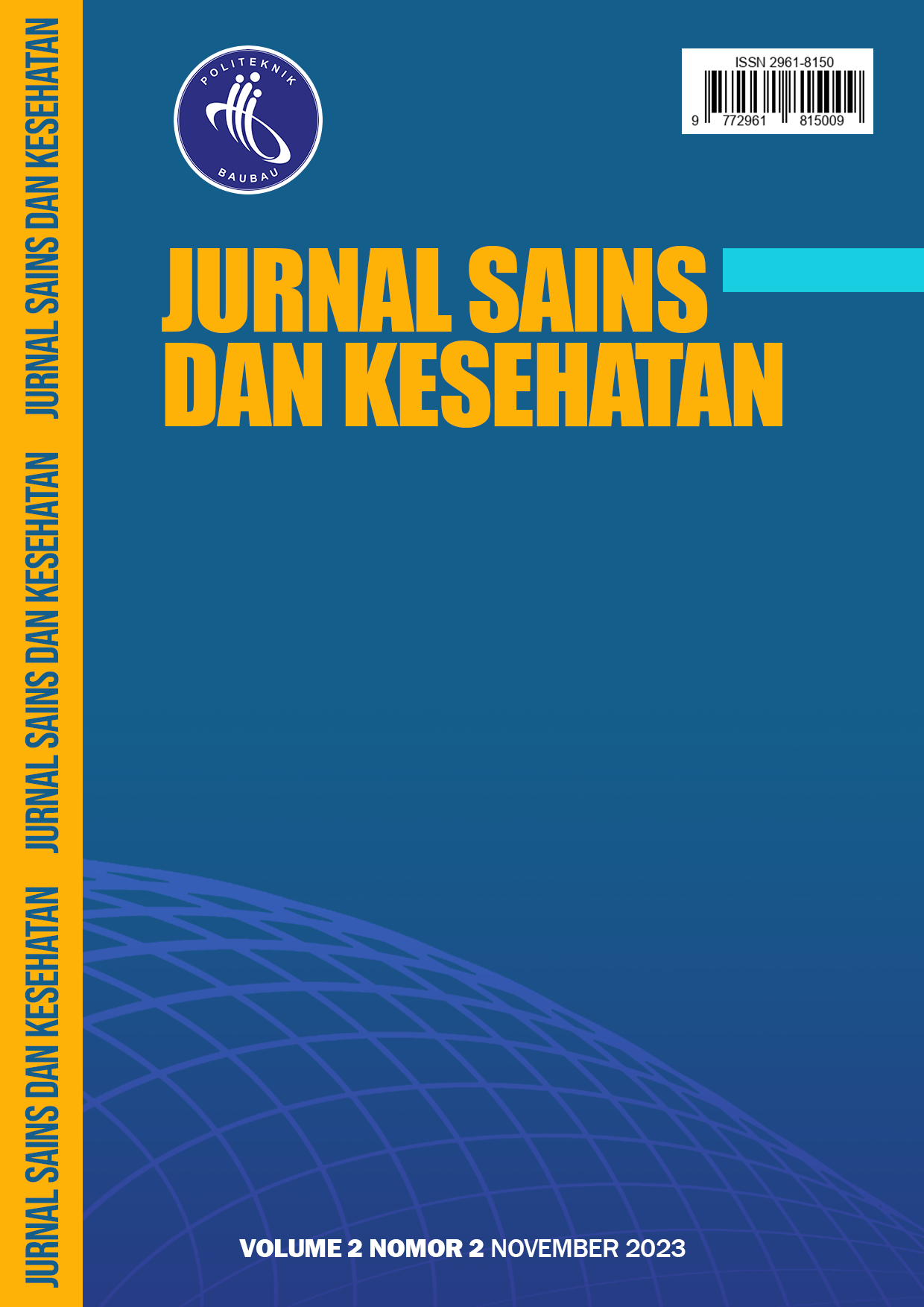Efektivitas Edukasi Donor Darah Melalui Media Video pada Keluarga Pelajar Mahasiswa Indonesia Bolaang Mongondow Raya Yogyakarta
Main Article Content
Abstract
The limited number of donors can be caused by a lack of information about blood donors. Knowledge is one aspect of knowing human behavior. To increase students' knowledge, they need a learning media that can describe real physical concepts such as video education. The objective of this study was to describe the effectiveness of blood donor knowledge education through video media at the Indonesian Bolaang Mongondow Student Families Raya Yogyakarta. This research was a quantitative descriptive research with a Quasi-Experimental method which was carried out with a pretest-posttest. The sample is 56 respondents and the sample is taken using the Random Sampling technique. The results showed that the level of knowledge about blood donation prior to video education found that the respondents classified as having a good level of knowledge, 15 people (26.8%), enough 26 people (46.4%), less 15 people (26.8%). While the level of knowledge of blood donors after educational video knowledge was good for 45 people (80.4%), enough for 10 people (17.9%) and less for 1 person (1.8%). The pretest average value of 56 respondents was 65.11 and the posttest average value was 88.59. The effectiveness of video education based on gender characteristics obtained very small results, namely men (difference in the mean pretest and posttest 24.85) and women (difference in the average pretest and posttest 24.24) it can be said that video education is not influenced by gender sex. Based on the characteristics of the most effective age 21-25 years (difference in the average pretest and posttest 23.97) can be said to be influenced by age. Based on the characteristics of the most effective level of education SMA/SMK (difference in the average pretest and posttest of 35) it can be said that it is influenced by the level of education. The results of the paired t test showed that there were significant differences in the level of knowledge about blood donors before and after education using video media with the Sig value obtained. 0.000. Education on blood donor knowledge through videos is effective in increasing knowledge about blood donation.
Article Details
References
Almutairi, S. H., Almalaq, A. A., & Albalawi, Y. M. (2018). Assessment of Knowledge, Attitude and Practice (KAP) of Saudi Adult toward Blood Donation in Riyadh City, 2017. The Egyptian Journal of Hospital Medicine, 70(3), 507–510. https://doi.org/10.12816/0043497
Astuti, Y., & Artini, D. (2019). Pemeriksaan Golongan Darah Dan Kadar Hemoglobin Pada Calon Pendonor Darah Di Puslatpur, Playen, Gunung Kidul. Jurnal Pemberdayaan: Publikasi Hasil Pengabdian Kepada Masyarakat, 3(3), 433–438. https://doi.org/10.12928/jp.v3i3.1216
Budiaman, & Riyanto. (2013). Pengetahuan dan Sikap dalam Penelitian Kesehatan. Salemba Medika.
Budiman, E., Hasudungan, R., & Khoiri, A. (2017). Online Game “ Pics and Words ” Sebagai Media Edukasi Bahasa Inggris Berbasis Html. Prosiding Seminar Ilmu Komputer Dan Teknologi Informasi, 2(1), 1–6. http://e-journals.unmul.ac.id/index.php/SAKTI/article/download/289/pdf
Enawgaw, B., Yalew, A., & Shiferaw, E. (2019). Blood Donors’ Knowledge And Attitude Towards Blood Donation At North Gondar District Blood Bank, Northwest Ethiopia: A Cross-Sectional Study. BMC Research Notes, 12(1), 1–6. https://doi.org/10.1186/s13104-019-4776-0
Erniasih, U., Pramono, S. E., & Atno, A. (2018). Perbedaan Hasil Belajar Dengan Menggunakan Media Video Edukasi Dan Media Video Dokumenter Pada Pembelajaran Sejarah Di Sma N 12 Semarang Tahun Ajarah 2017/2018. Indonesian Journal of History Education, 6(2), 162–171. https://journal.unnes.ac.id/sju/index.php/ijhe/search/search
Fathonah, M. F., Wahyuningsih, S., & Syamsuddin, M. M. (2020). Efektivitas Media Audio Visual Terhadap Kecerdasan Visual Spasial Anak Usia 5-6 Tahun. Kumara Cendekia, 8(2), 142. https://doi.org/10.20961/kc.v8i2.39789
Fatmawati. (2017). Perbedaan Gaya Belajar Berdasarkan Jenis Kelamin Pada Siswa MTS MADANI PAO-PAO. Tarbiyah Keguruan.
Fauzi, D. A., Adani, F. I., Kurnianingsih, & Yudantoro, T. R. (2019). Aplikasi Info Donor Darah Berbasis Mobile dengan Teknik Crowdsourcing. Politeknik Negeri Semarang, 8(1), 33–37. https://jurnal.polines.sc.id/index.php/jtet/article/download/1777/106747
Hardayani. (2021). Hubungan Antara Jenis Kelamin, Gaya Belajar Dan Prestasi Belajar Pada Mahasiswa Semester VI Fakultas Kedokteran Universitas Pembangunan Nasional “Veteran” Jakarta. Fakultas Kedokteran.
Ikaditya, L. (2016). Hubungan Karakteristik Umur Dan Tingkat Pendidikan Terhadap Pengetahuan Jurnal Kesehatan Bakti Tunas, 16(1), 171. https://doi.org/10.36465/jkbth.v16i1.180
Jane, S., Kartika, A., & Anggrayine, R. D. (2021). Gambaran Pengetahuan Sikap dan Motivasi Donor Darah Sukarela mengenai Donor Darah.
Makiyah, A. (2016). Analisis Persepsi Masyarakat Terhadap Pentingnya Pengetahuan Donor Darah Bagi Kesehatan. 1, 6.
Narpila, S. D. (2019). Perbedaan Kecerdasan Spasial Antara Siswa Laki-Laki Dan Siswa Perempuan Kelas X Sma Ypk Medan Pada Materi Geometri. Jurnal Prinsip Pendidikan Matematika, 2(1), 34–41. https://doi.org/10.33578/prinsip.v2i1.39
Nofrion. (2021). Komunikasi Pendidikan Penerapan Teori dan Konsep Komunikasi Dalam Pembelajaran.
Permadi, P. (2021). Efektivitas Edukasi melalui Media Video sebagai Upaya Meningkatkan Pengetahuan Donor Darah pada Mahasiswa Kesehatan Unjani Yogyakarta Tahun 2021. 1(1), 21–26.
RI, D. K. (2015). Peraturan Menteri Kesehatan Nomor 91 Tahun 2015 tentang Standar Pelayanan Transfusi Darah.
Rini, W. N. E. (2019). Pengaruh Penggunaan Media Audio Visual Terhadap Peningkatan Pengetahuan Remaja Tentang Donor Darah Di Puskesmas Rawasari Kota Jambi.
Rosalinda. (2016). Pengaruh Tingkat Pengetahuan Donor Darah Dengan Menggunakan Media Audiovisual Melalui Video Terhadap Tingkat Remaja Tunagrahita Di SLB N 1 Bantul.
Zainab Ainunnisa, Ratna Prahesti, N. P. (2020). Gambaran Pengetahuan Mahasiswa Fakultas Ekonomi Dan Sosial Unjani Yogyakarta Tentang Donor. Jendral Ahmad Yani Yogyakarta.

